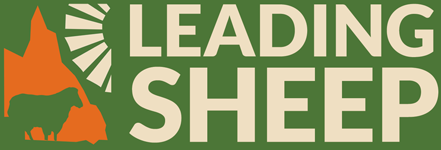Dear Leading Sheep Member,
Understanding your wool test results allows you to get the best price possible for your wool. As members of the Leading Sheep South West Regional Coordinating Committee recently noted, ‘No longer can you afford, if you ever could, to simply harvest and sell your wool. You have to look carefully at your wool test results and use this information to solve any problems identified. Who doesn’t want their county and sheep to grow the best possible wool?’ To do this you have to understand your wool test results and what they mean.
A few of examples of how producers have used their wool test results to produce better wool and prices:
- A wool producer noticed that his fine wool weaners were not achieving a combing wool length of 60mm or more. Initially he addressed the problem by asking the wool classer to create a line(s) of greater than 60mm. This worked, but was not the full answer. Eventually a new stud was chosen and after a few years the weaners are now returning wool lengths of over 70mm locking in much improved prices for the weaners wool.
- Most people struggle with staple strength at times and can suffer big discounts. By understanding your wool test results and monitoring staple strengths over a few years you will be able to identify where your wool is being consistently challenged and do something about it. Selecting rams for improved staple strength may be one of these steps.
- A producer wants to reduce the fibre diameter of his flock to 19 microns. He checks his test results each year to monitor progress. After a few years he notices that his average fibre diameter is still 21 microns (and this is during a normal or average season). This tells him that what he is doing to reduce fibre diameter is not producing the desired results and perhaps a change in studs is needed.
- As you know there are discounts applied if you have greater than 3% vegetable matter (VM) in your wool. By looking at your test results you can work out which particular mobs or paddocks may be having the greatest problems with VM. And once you know where your greatest VM problems are occurring you can do something about it. Some of your options may be to graze with cattle first, only put freshly shorn sheep in these paddocks for short periods, or use these paddocks for those sheep with the lowest value wool.
- You have been checking your wool test results over a number of years and notice that you consistently have a high percentage of breaks in the middle of your wool. This indicates that a change in shearing time may be needed or closer investigation to work out what is causing this problem.
- You notice on your wool test results that your pieces are selling for a similar price to your fleece lines. This may indicate that you may be skirting too heavily as your fleece lines should be of a higher value than your pieces.
For more information:
Listed below are a number of resources that you might find helpful in understanding and using your wool test results to produce better wool. Save time and just click on the one that interests you the most. Alternatively talk to your local wool broker or woolclasser.
AWEX Bale Descriptions – bale description charts
Woolclasser Code of Practice – to obtain a copy of the 2013-15 Code of Practice contact AWEX on 02 9428 611 or email registrar@awex.com.au
This email was sent on behalf of the Leading Sheep project.
